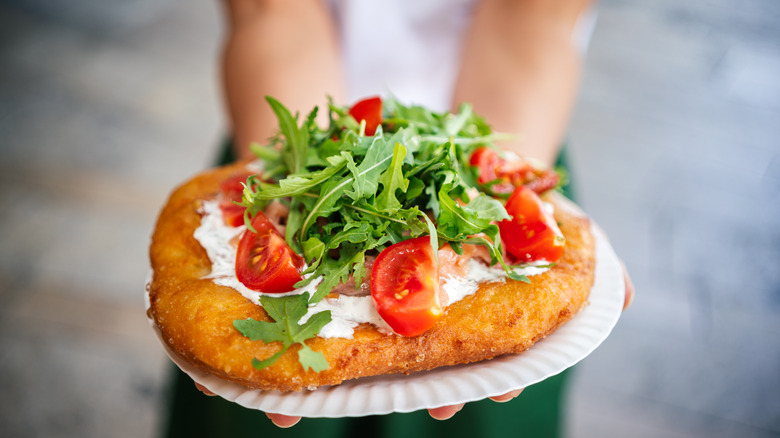The Many Faces Of A Hungarian Fried Dough Specialty
Most of the time, deep-fried foods are simply irresistible. The appealing factor is probably the crispy and crunchy external layer of fried foods, and when mixed with the succulent texture underneath, who can resist indulging in it? It seems that many people can't, as the University of Iowa Health Care reports that around 25% to 36% of North Americans love fried foods, especially the ones made in fast-food joints.
And according to Thrillist, the best place to find and enjoy fried foods seems to be at one of the numerous county fairs. Apparently, deep-frying was invented by the Egyptians, and the practice was then adopted by the Romans. Nowadays, most people love fried foods due to the Maillard reaction that happens when the batter hits the hot oil, and sugar and proteins react with heat to produce something oily, crispy, and delicious. And one subcategory of fried foods is popular all over the world due to its affordable and readily available ingredients — flour, water, yeast, and oil — it is all you need to make this fried dough.
Lángos can be topped with anything
Insider reports that fried dough takes many forms across the world, such as Spanish churros, Italian zeppole, Dutch oliebollen, and Chinese youtiao. And although most recipes tend to err on the sweeter side, a Hungarian fried dough specialty known as lángos has many faces, and most of them are savory. It is also an iconic street food you can only find in Europe. According to Hungary Today, lángos is the oldest Hungarian dish, and in the past, it was baked in the oven. It typically consists of flour, water, yeast, salt, sugar, and oil. The dough is shaped into a disk and then fried in hot oil on both sides until golden and crispy.
And once done, lángos can be eaten in many ways. Some like it sprinkled only with salt, while others opt for a simple garlic rub or the most popular topping that consists of sour cream and grated cheese. But the options are virtually limitless — other toppings include anything from pörkölt stew or salami slices to Hungarian red peppers or chopped onions (per Taste Hungary). You can find this slightly addictive Hungarian street food staple at markets and festivals throughout the country, but you can also try making a few in the confines of your own kitchen.

